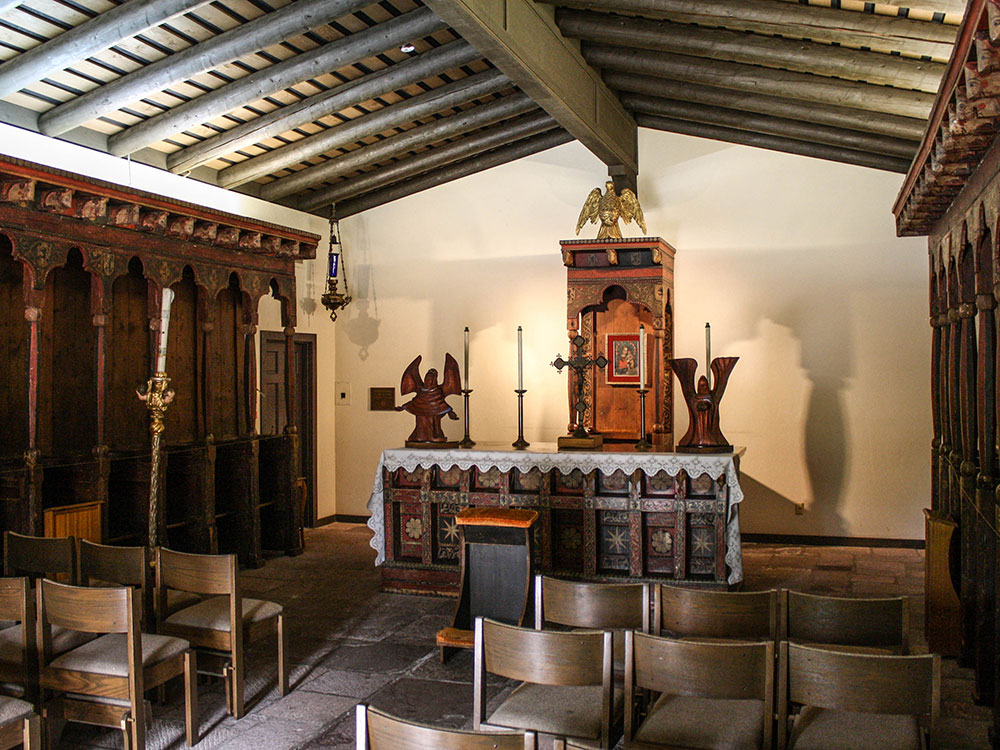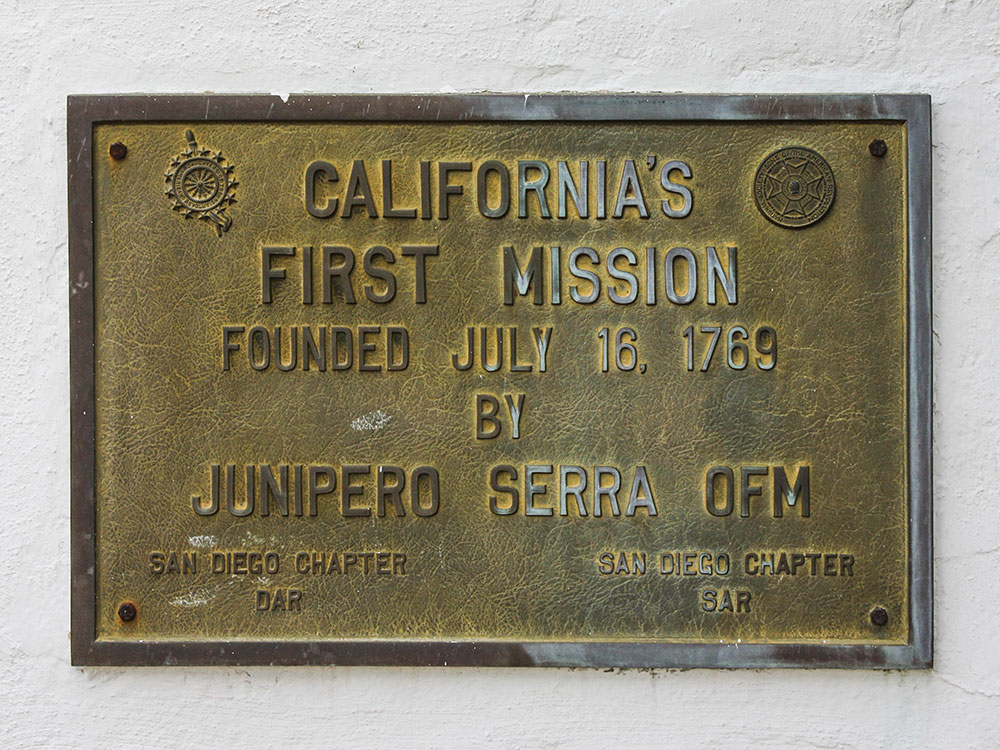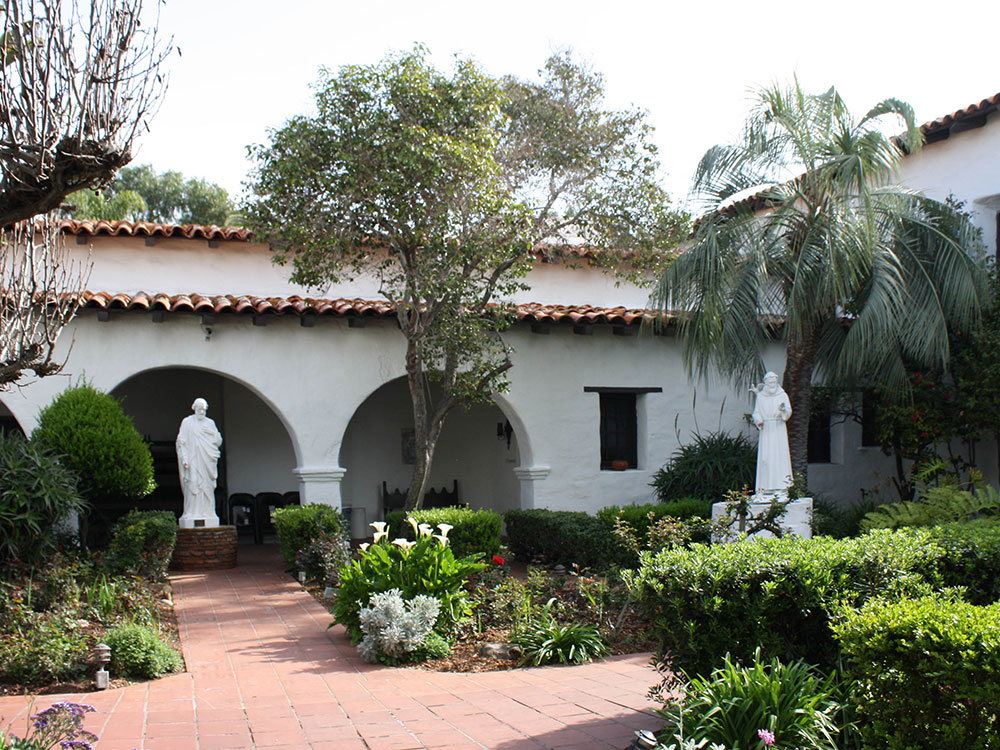First Franciscan mission in The Californias is the fifth to stand on this location. The mission site is a National Historic Landmark
San Diego, CA, 92108
Parish Office
Monday to Friday: 9am to 4pm
Visitor Center and Gift Shop
Monday to Friday: 9am to 3:30pm
Saturday & Sunday: 10am to 3pm
Continue to CA-94 E. Take I-15 N to Friars Rd. Take exit 7A from I-15 N. Follow Friars Rd, Rancho Mission Rd and San Diego Mission Rd.
Overview
Mission Basilica San Diego de Alcalá was the first Franciscan mission in The Californias, a province of New Spain. Located in present-day San Diego, California, it was founded on July 16, 1769, by Spanish friar Junípero Serra in an area long inhabited by the Kumeyaay people. The mission and the surrounding area were named for the Catholic saint Didacus of Alcalá, a Spaniard more commonly known as San Diego. The current church, built in the early 19th century, is the fifth to stand on this location. The mission site is a National Historic Landmark.
History
The former Spanish settlement at the Kumeyaay Nipawai lies within that area occupied during the late Paleoindian period and continuing on into the present day by the Native society commonly known as the Diegueño; the name denotes those people who were ministered by the padres at Mission San Diego de Alcalá. Relatively, much is known about the native inhabitants in recent centuries, thanks in part to the efforts of Juan Rodríguez Cabrillo, who explored the coast in the service of Spain. He documented his observations of life in the coastal villages he encountered along the Southern California coast in October 1542. Cabrillo was the first European to set foot in what is now the state of California and the first to encounter San Diego Bay. On the evening of September 28, 1542, the ships San Salvador and Victoria sailed into the harbor, whereupon Cabrillo christened it "San Miguel." During that expedition a landing party went ashore and briefly interacted with a small group of natives. Some sixty years later another Spanish explorer, Sebastián Vizcaíno, made landfall some ten miles from the present Mission site. Under Vizcaíno's command the San Diego, Santo Tomás, and frigate Tres Reyes dropped anchor on November 10, 1602, and the port was renamed "San Diego de Alcalá." It would be another 167 years before the Spanish returned to San Diego.
Ever since the voyages of Christopher Columbus, the Kingdom of Spain sought to establish missions to convert the native indians in Nueva España ("New Spain") to Roman Catholicism to save souls and to facilitate colonization of these lands. However, it was not until 1741—the time of the Vitus Bering expedition, when the territorial ambitions of Tsarist Russia towards North America became known—that King Philip V felt such installations were necessary in Upper California. In 1769, Visitador General José de Gálvez sent the expedition of Junípero Serra and Gaspar de Portolà to found missions and presidios at San Diego and Monterey (see Timeline of the Portolà expedition), thereby securing Spain's claim to the Pacific Coast harbors recommended by Cabrillo and Vizcaino. Two groups traveled from Lower California on foot, while a pair of packet ships (bearing supplies) traveled up the coast from the Baja California Peninsula.

The original mission church was destroyed by fire in 1775 during an uprising by local indigenous people. Father Serra then returned to the site of the original structure in 1776 to oversee the rebuilding of the mission. However, the scarce amount of water and the difficulty of making the land till (feasible for preparing crops to be planted by plowing and fertilizing) made the re-establishment of the mission a long and difficult process. From 1778 to 1795, the mission focused on horse and mule breeding, providing other missions in Alta and Baja California an average of 16 animals per year. After it was restored as a Catholic mission, Mission San Diego de Alcalá saw a record number of spiritual results recorded when 567 baptisms were performed, and neophytes numbered 908.
California statehood (1850-1900)
President Abraham Lincoln signed a proclamation on May 23, 1862, that restored ownership of the Mission proper to the Roman Catholic Church. When Mission San Diego de Alcalá was granted back to the Church, it was in ruins. In the 1880s Father Anthony Ubach began to restore the old Mission buildings.

20th century and beyond (1901 - present)
Father Ubach died in 1907 and restoration work ceased until 1931. In 1941, the Mission once again became a parish church, in what is still an active parish serving the Diocese of San Diego. In 1976, Pope Paul VI designated the Mission church as a minor basilica.
This article uses material from the Wikipedia article "Mission San Diego de Alcalá", which is released under the Creative Commons Attribution-Share-Alike License 3.0.
-1000.jpg)
 Bernard Gagnon, CC BY-SA 3.0, via Wikimedia Commons ; Image Size Adjusted
Bernard Gagnon, CC BY-SA 3.0, via Wikimedia Commons ; Image Size Adjusted